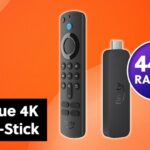Qualcomm has officially announced its new high-end chipset that will be integrated into 2022 flagships: the Snapdragon 8 Gen 2. The new processor promises significant improvements in performance, power efficiency and AI processing, as well as in the area of tate transfer, and is ready for new standards at increased speeds. We also have a first list of partners that will use these chips.
Snapdragon 8 Gen 2 comes with a new CPU configuration
The Snapdragon 8 Gen 2 comes with a hardware configuration that we haven’t seen before, but will definitely provide better performance. That’s because we now have a 1+2+2+3 core format, with fewer efficient cores and more performance.
The main core is a Cortex-X3, a new generation one from ARM, which comes out of the box with a 3.19 GHz frequency. Then we have two Cortex-A715 performance cores at 2.8 GHz and two more Cortex-A710 at 2.8 GHz. These will take the brunt of multi-core tasks in demanding applications. Finally, secondary activities and multimedia playback will be performed on the three efficient Cortex-A510 cores at 2 GHz.
Qualcomm promises 25% improvement in performance over previous generation with 40% improved power efficiency. This doesn’t mean that battery life will increase, just that for the same level of performance, the new chip consumes 40% less. Being a more powerful processor, the improvements in power consumption will certainly not be so great from one year to the next. The new Adreno 740 GPU is also the first in its portfolio to support ray-tracing, Qualcomm says, but that’s still 25% more powerful than in the past.
Improvements elsewhere are minimal
And AI processing is now more efficient, delivering 60% more performance per watt, according to Qualcomm, and 4.35x more processing power of this kind. These improvements along with the new Hexagon ISP for photos should lead to faster processing of in-camera frames and movies. Qualcomm is also talking about the ISOCELL H3, the first 200-megapixel photo sensor “optimized” for the Snapdragon 8 Gen 2, but we know this is all marketing and nothing else. ISOCELL H1 high-resolution sensors have already been used on Snapdragon 8 Gen 1 phones without any problems.
The only other significant difference would be the adoption of the X70 modem with LTE and 5G, which increases upload speeds to 3,500 Mbps from 3,000 on last year’s X65. Bluetooth 5.3 and Wi-Fi 7 support also appear, as well as 8K video playback at 60 FPS with HDR. Filming remains limited to 8K 30 FPS, however.
Samsung, absent from the list of confirmed partners
Qualcomm has also published a list of brands that will be developing and releasing Snapdragon 8 Gen 2 phones in the near future, which seems to be missing Samsung. ASUS ROG, Honor, iQOO, Motorola, Nubia, OnePlus, Oppo, REDMAGIC, Redmi, SHARP, Sony, vivo, Xiaomi, XINGJI/MEIZU and ZTE are mentioned. The first models are expected in late 2022.
Samsung probably won’t want to talk clearly about the Galaxy S23 series processor, instead mentioning a “next-generation octa-core processor” as it has been doing for a few years now. However, the latest statements from Qualcomm officials suggest that the S23 will no longer use Exynos processors in any region.



 What’s happening with AI? Researcher explains why you can look forward to more creative NPCs, competition for ChatGPT and hot dog tomatoes
What’s happening with AI? Researcher explains why you can look forward to more creative NPCs, competition for ChatGPT and hot dog tomatoes Cowboy launches new on-demand service: That’s what’s inside
Cowboy launches new on-demand service: That’s what’s inside The new 4K Fire TV stick is now brutally reduced and transforms your old television into a smart TV
The new 4K Fire TV stick is now brutally reduced and transforms your old television into a smart TV The best mouse I’ve ever had, convinces me for gaming, work and home office and is different than all its predecessors!
The best mouse I’ve ever had, convinces me for gaming, work and home office and is different than all its predecessors! The first smart glasses suitable for everyday use that you can buy
The first smart glasses suitable for everyday use that you can buy